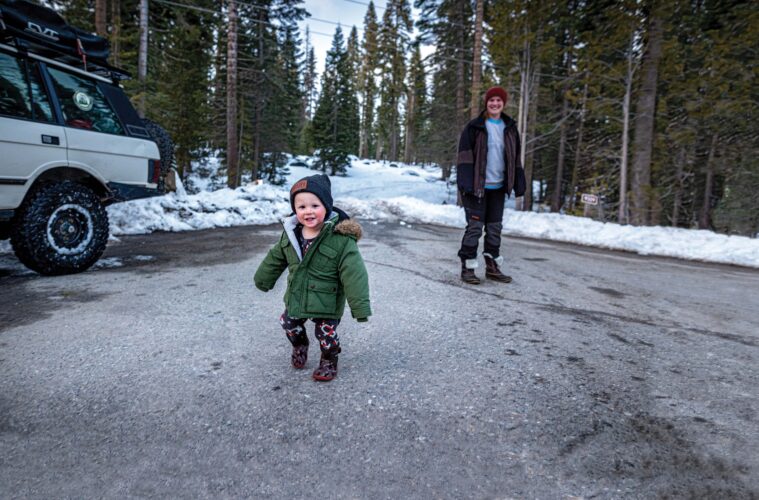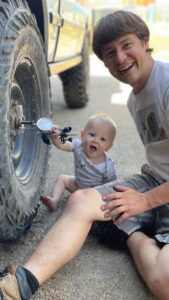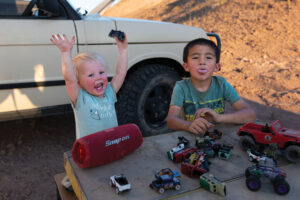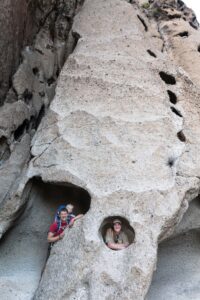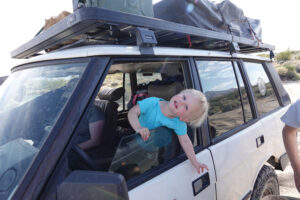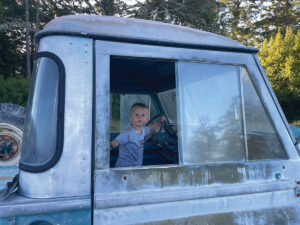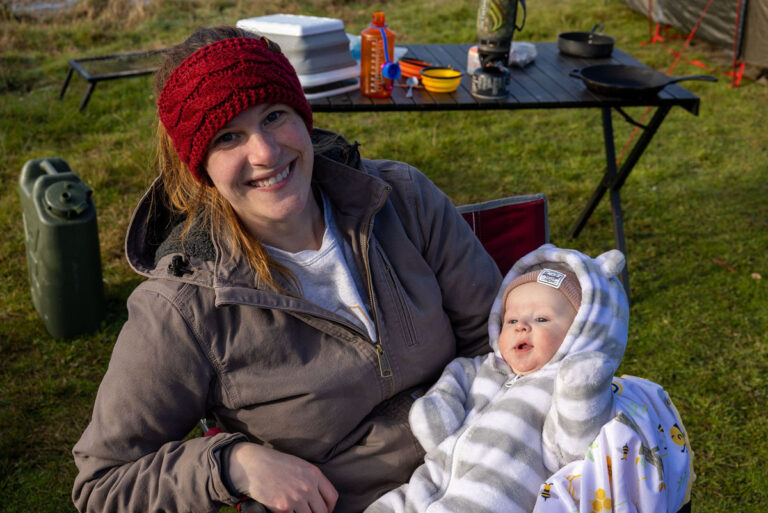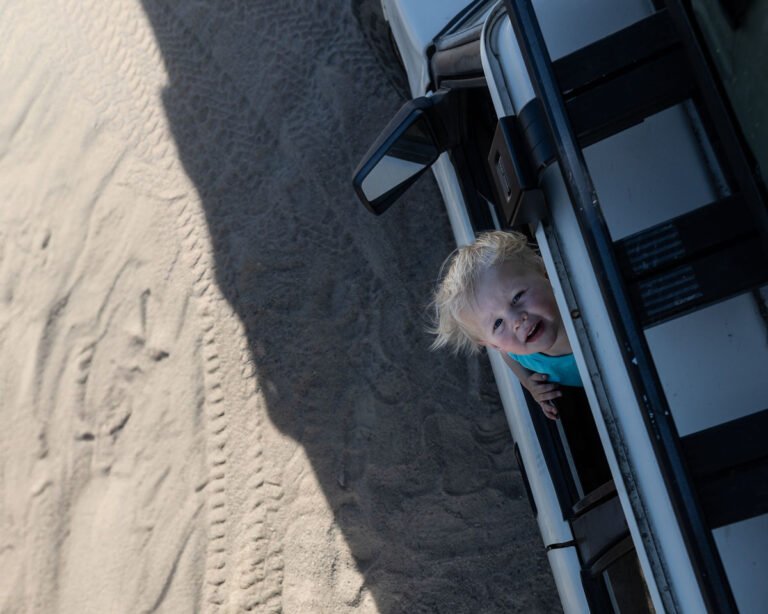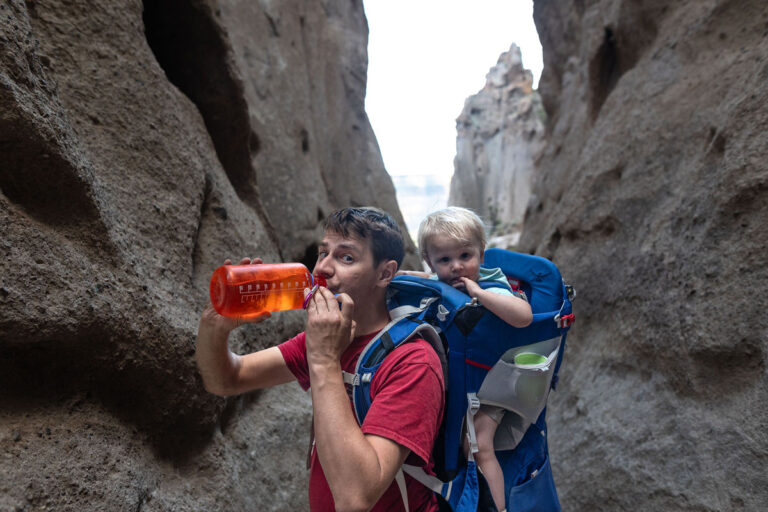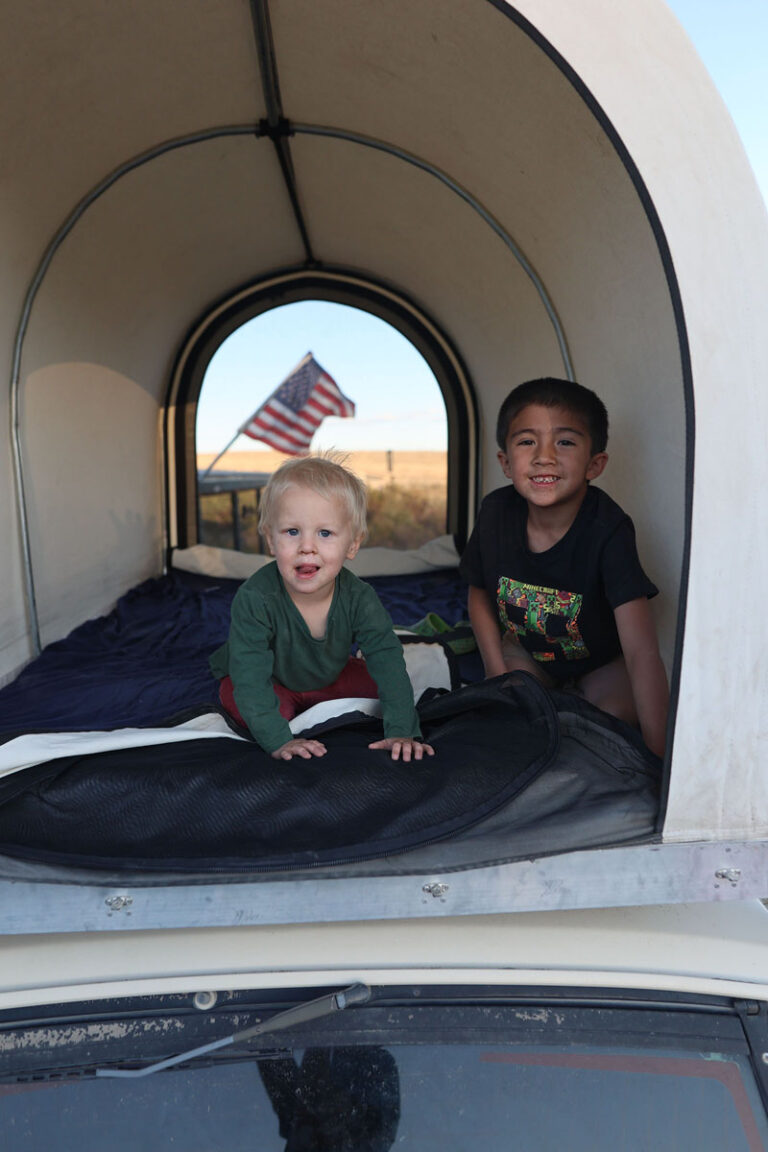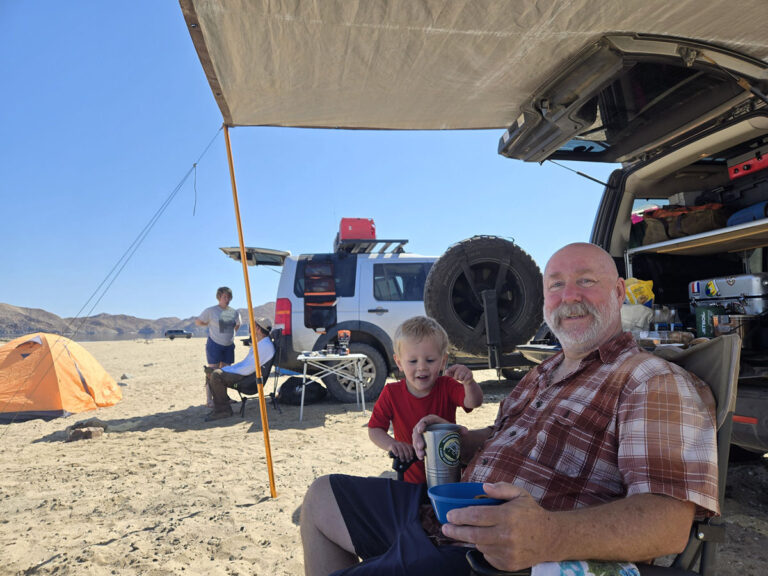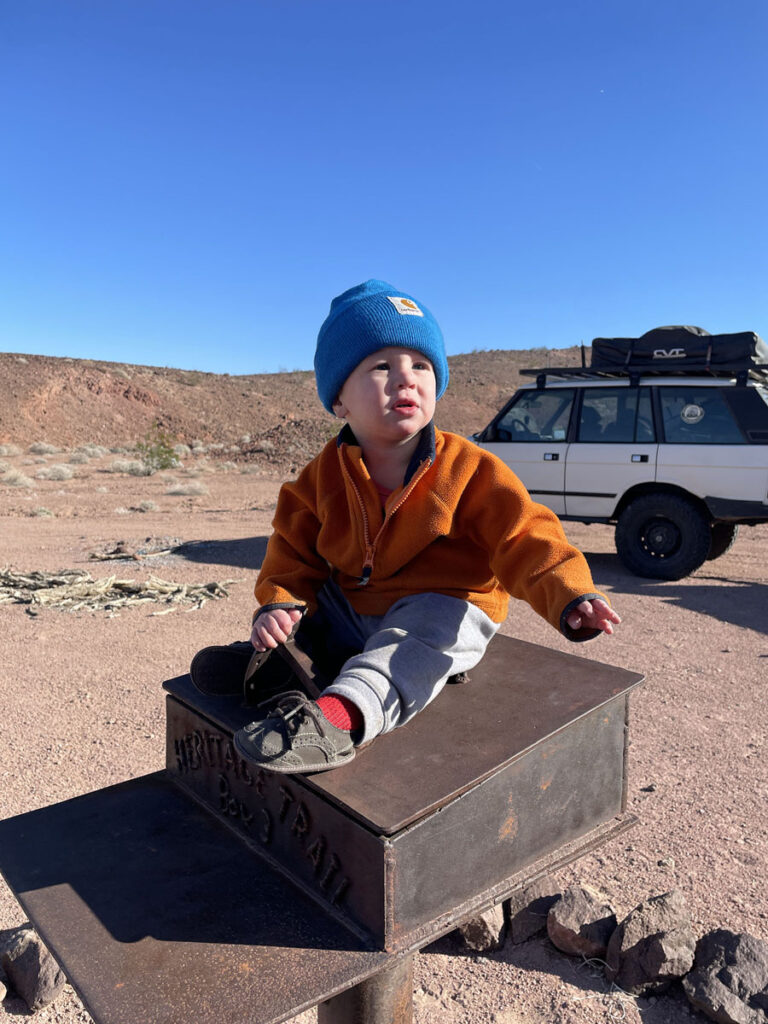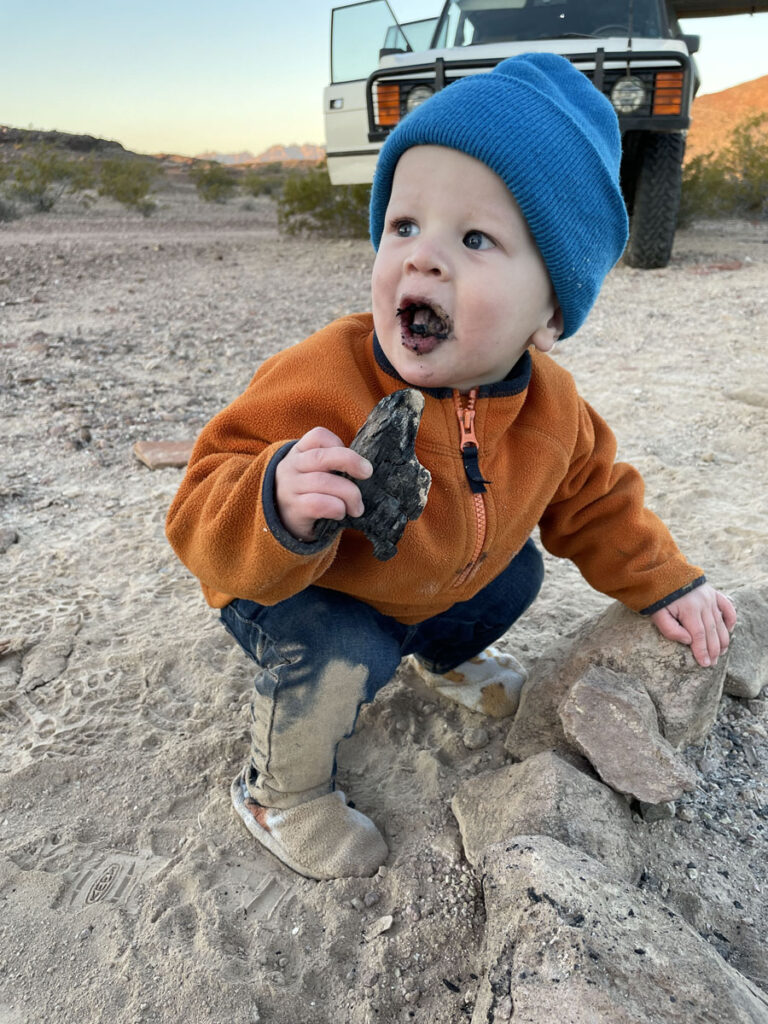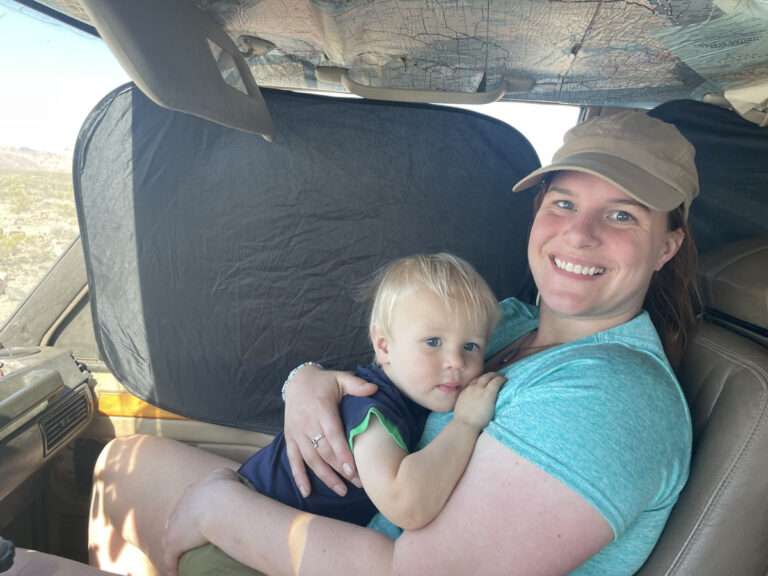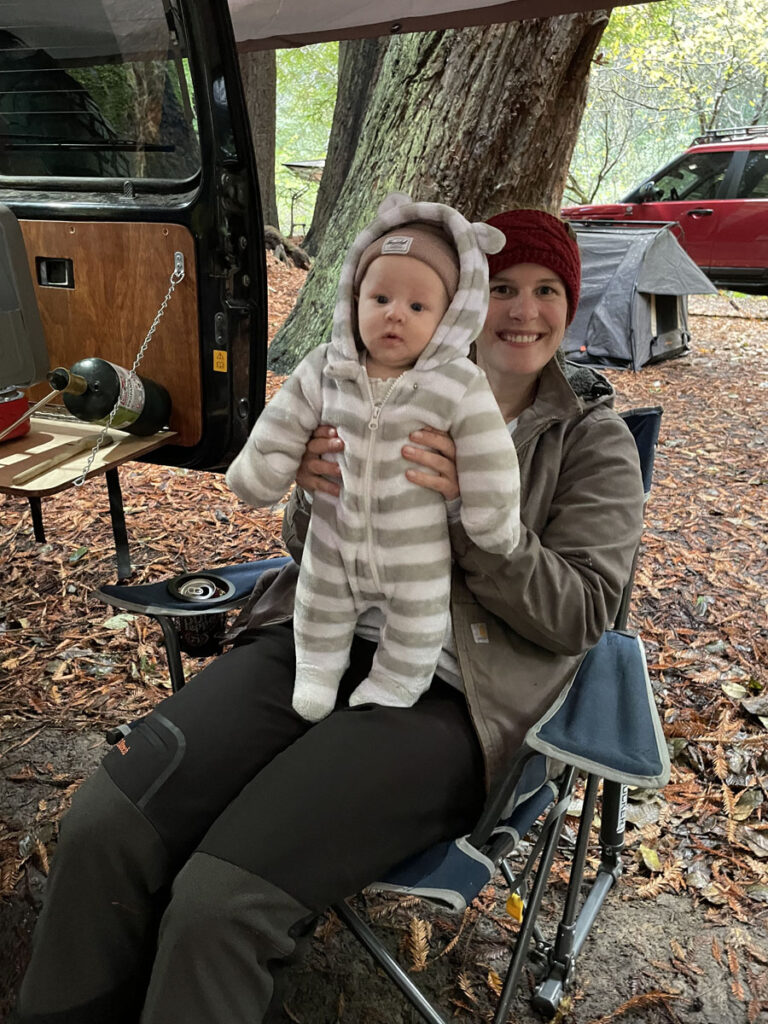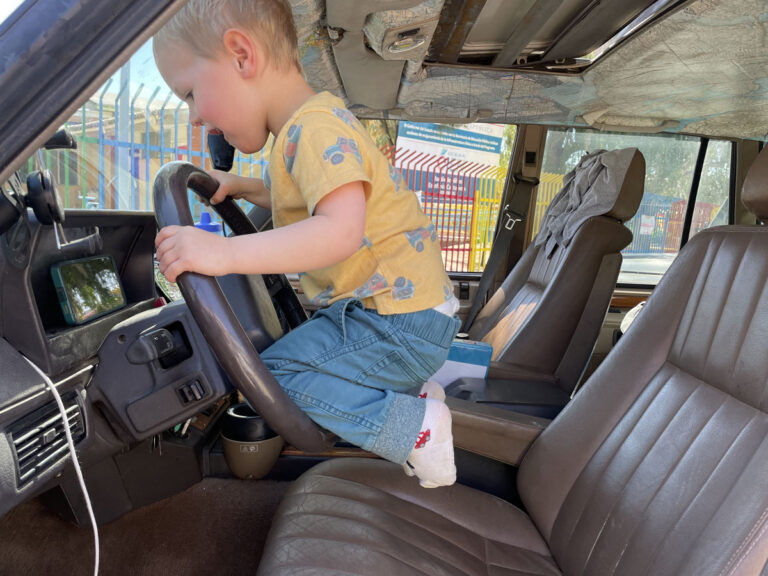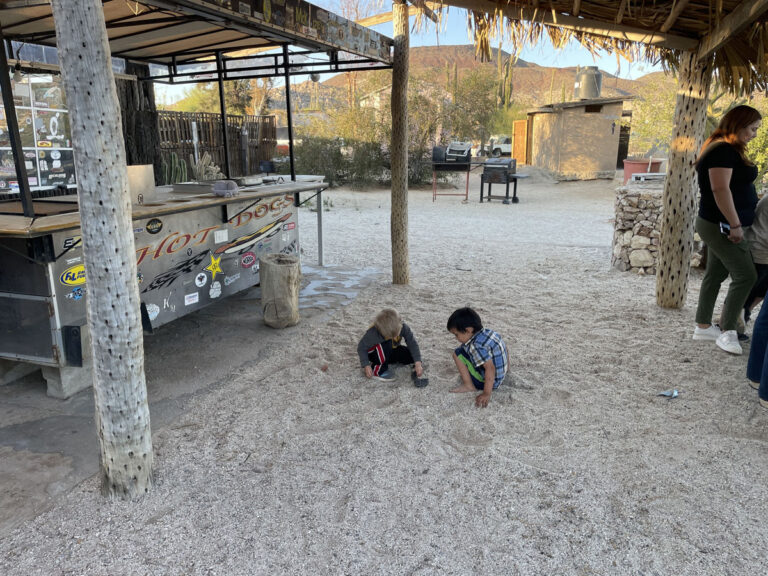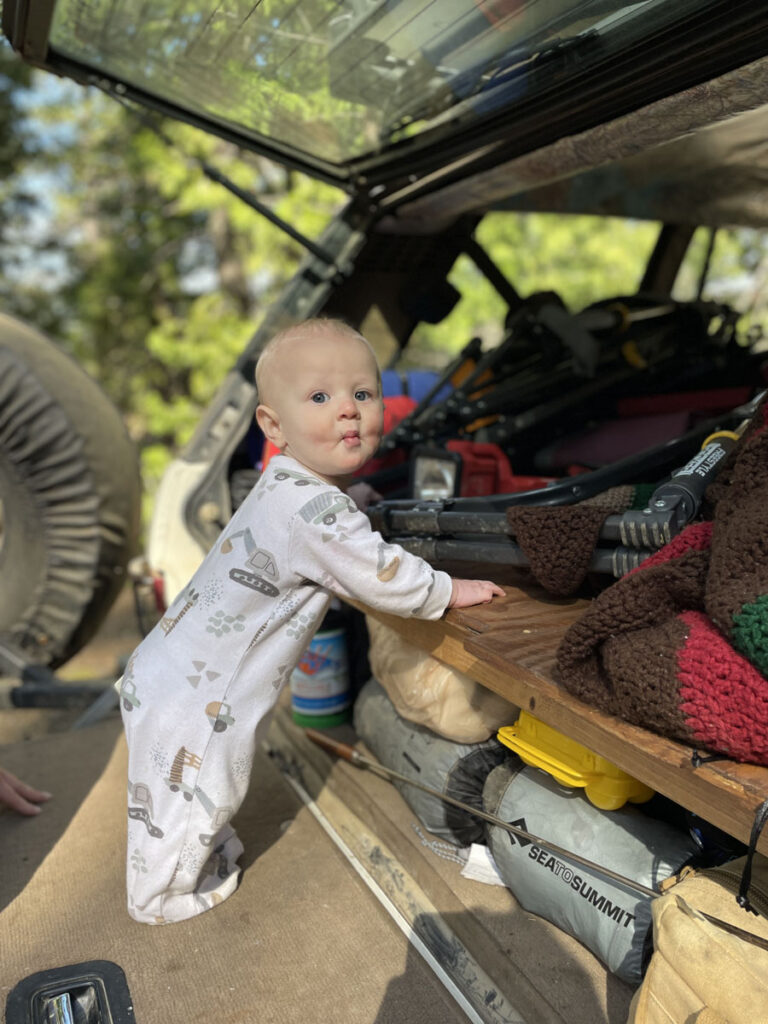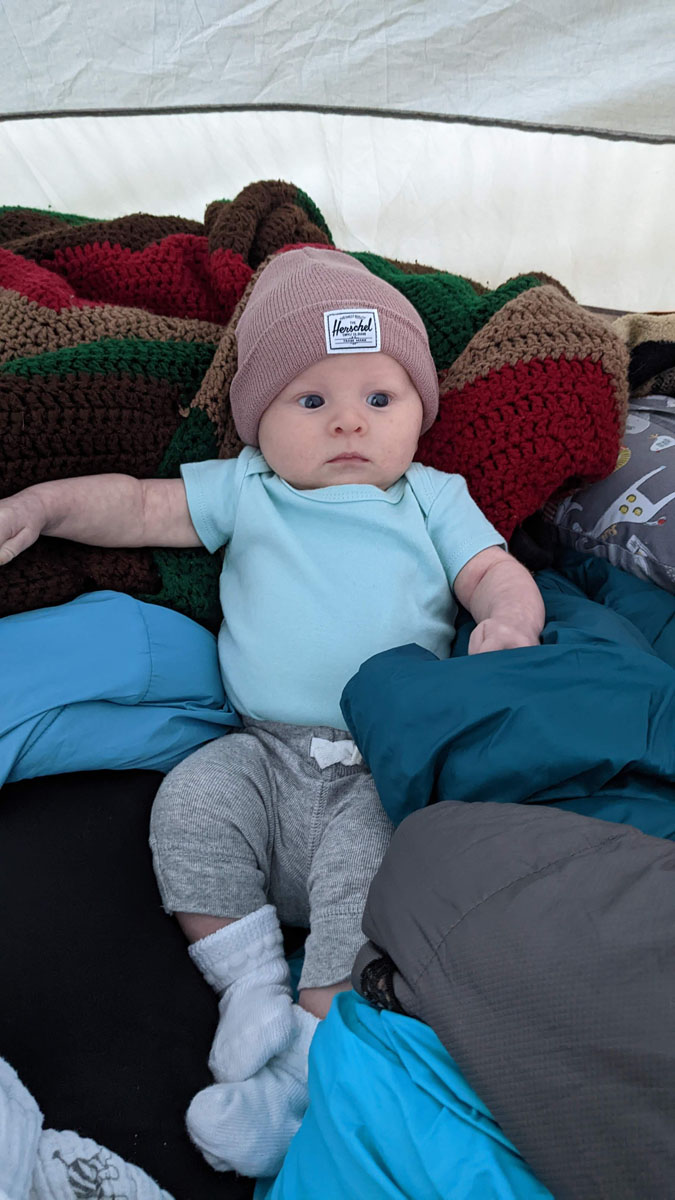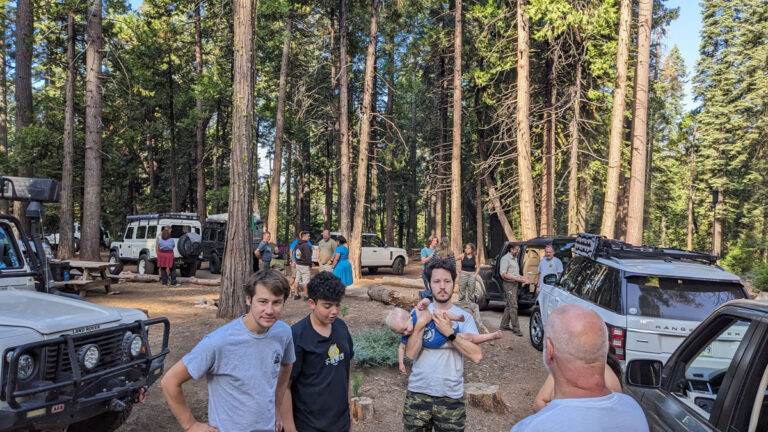Adventures stop with kids,” so said the conventional wisdom. We found the answer to this was false—with some extra planning, a healthy dose of flexibility, and a spirit of fun, overlanding with small children can provide the most rewarding ways to bond as a family and introduce your kids to the natural world.
Overlanding with a toddler might seem daunting, but it’s possible with the right planning. And once we got into the swing of things, it became about the journey, not the destination. Yes, there might be tantrums, bug bites, and spilled milk — but also wide-eyed wonder, giggles in the tent, and a deeper connection with nature and each other.
We started overlanding with our son, Henry, when he turned two-months old. Camping and exploring the outdoors with him meant planning around nap windows, packing three times the snacks we thought we’d need, and leaning into flexibility.
Henry’s first adventure introduced him to Dinky Creek up in the Northern California Sierras. At his age, he couldn’t run away, but he could cry, disrupt sleep, and eat all the time. Thankfully, we shared time with an amazing support group that took turns taking Henry for feedings and cuddles when I needed a break or an escape. Knowing we could trust at least three people at each campsite, camping allowed me to relax from a busy week. Henry could explore and learn while I could decompress and rest.
On the road, I often found myself in the back middle seat helping take care of Henry. These experiences taught me that rolling stops and Dramamine for Mom comprise keys elements of success. After Henry’s first birthday, I earned a promotion into the passenger’s seat, which assured contortions to hold his hands or provide an endless supply of snacks.
As Henry entered his toddler years, our need to get out of the house never changed. I could sense the tension growing and knew we needed a change of scenery. By age two, we’d become a well-oiled machine. Through the years, our list of things to pack has compacted. Instead of binkies, pumps and bottles, we swapped for stickers, dinosaurs, and front facing seats. We developed a new camping list and reconfigured the way we packed the Land Rover.
The thrill of seeing the world through Henry’s eyes has always been my favorite part. Instead of sitting in front of a screen, he climbed rocks, spotted wildlife, and helped set up camp. We witnessed lessons of resilience, problem-solving, and a deep respect for nature. In the early days we tried to corral Henry in a playpen, but this child loved to wander. Toys and soft items only kept his attention for so long; he loved to roam and find his own adventure. Being flexible was the best lesson Henry has taught us.
Through our travels, Henry’s sense of adventure grew, and his interpersonal skills thrived. Henry has always pushed his boundaries – from vocabulary to motor skills. It has been incredible to watch him scoot, crawl, and walk in the same woods we love to visit. It has been a joy to observe Henry point out the window or meet new people. His curiosity never ceases to amaze me; he will play with any child he finds or say “Hi” to any stranger. Recently on a week-long trip through the outback of Baja Mexico, he made friends with some local toddlers. We pulled up for a fuel stop and Henry waltzed right over and sat down, quietly joining what we assume was a school session story time. The teacher gave us a glance and smiled. After the story book, the children could play in the gravel with bikes and action figures. One boy, Michaelito, bonded with Henry. Though they could not communicate through English nor Spanish, it was incredible to watch them work through this language barrier and then “explain” play by communicating with touch, sight, pointing, and example. It’s been amazing watching Henry grow and develop these lifelong skills.
These trips may not always go perfectly, but they’ll always be worth it. A couple years ago we were on a nine-day overlanding trip through Eastern Oregon. Far from any semblance of civilization, we ran out of formula and made it down to our last diaper. Thankfully, by crowdsourcing various foods, we were able to feed Henry one full day without formula and just barely make it into the small town of Christmas Valley. There we bought the last package of diapers (one size too big) and the last two cans of formula!
That was a lucky save.
Overlanding offers us freedom to fill the day. Unlike hotels or air travel, we control the schedule. Need an impromptu potty stop? No problem. Nap time in the car? Go for it. Want to stay an extra night near a lake you all fell in love with? Totally doable. Henry would acclimate well to any environment we placed him in. I feel as though I can relax more knowing Henry can get into dirt and explore his surroundings without the fear of him becoming sick. (Weirdly enough, Henry would get sicker at daycare than in the outdoors.)
Overlanding with small children might not always be smooth — but that’s part of the magic. You’ll face mud, meltdowns, and trail siestas. But you’ll also find starlit skies, belly laughs, and unforgettable family moments you’d never get in a resort. Camping with Henry wasn’t always picture-perfect (there were moments of frustration, especially when he didn’t want to sleep or when he dropped an entire bag of snacks into the dirt), but the best part was seeing his joy. The excitement in his eyes as he discovered a new puddle, the joy in his voice when he spotted a cow, and the way he proudly pointed to the campfire and said, “Hot!” — it was all worth it. As parents, we learned that camping with a toddler doesn’t require perfection, just presence. It’s about slowing down, embracing the mess, and letting your child experience the world at their own pace.
So load up the Land Rover, grab the kids, and hit the trail. Adventure is out there — and it’s even better when shared with your littlest explorers.
And next year? Henry will be even more excited to camp again — maybe we’ll even teach him how to set up the tent!
Tips to keep yourself sane:
- Always overpack. Yes, kids have a lot of stuff, but running out of formula or diapers is worse.
- Get comfortable in the middle seat; make sure it is clear and at least one hand is free for baby hand holding.
- Invest in a good baby carrier or backpack. We love our Osprey Poco Plus Carrier.
- For the infant, we used our baby changing station as a little bassinet.
- Baby monitor for the worried mom (ME) so you can relax by the fire as they sleep.
- Make sure everything has its place: We placed Henry’s toys in a soft crate by his seat, wipes and sippy cup within arm’s reach, and an emergency stash of M&M’s tucked away just in case.
